|
 Dwight Peck's personal website Dwight Peck's personal website
Ten wintry days in the South of France
Montpellier, Arles, the Camargue, and lots of et cetera
You may not find this terribly rewarding unless you're included here, so this is a good time for casual and random browsers to turn back before they get too caught up in the sweep and majesty of the proceedings and can't let go.
Tournon-sur-Rhône along the way
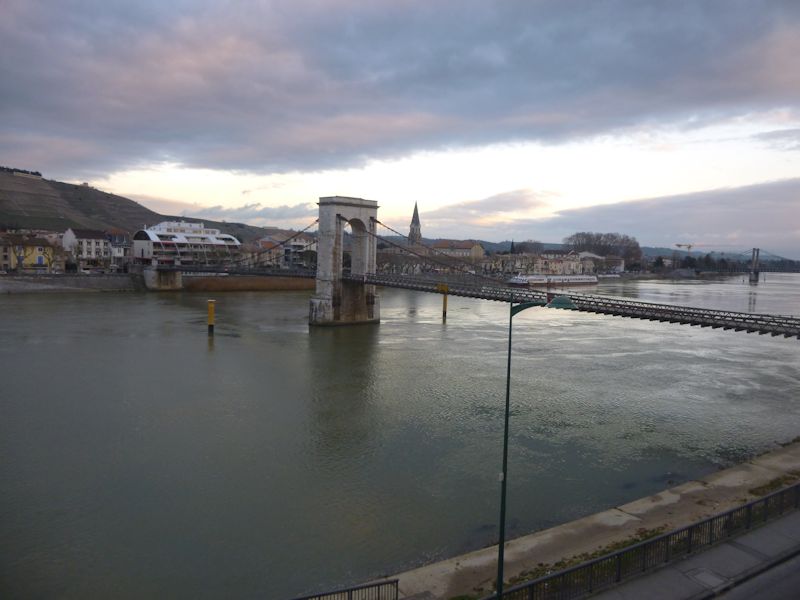
Nowadays, we like to keep our driving days in the 3-hour range, which brings us to Tournon-sur-Rhône, on the river Rhône, of course, at dusk. 25 December 2014.
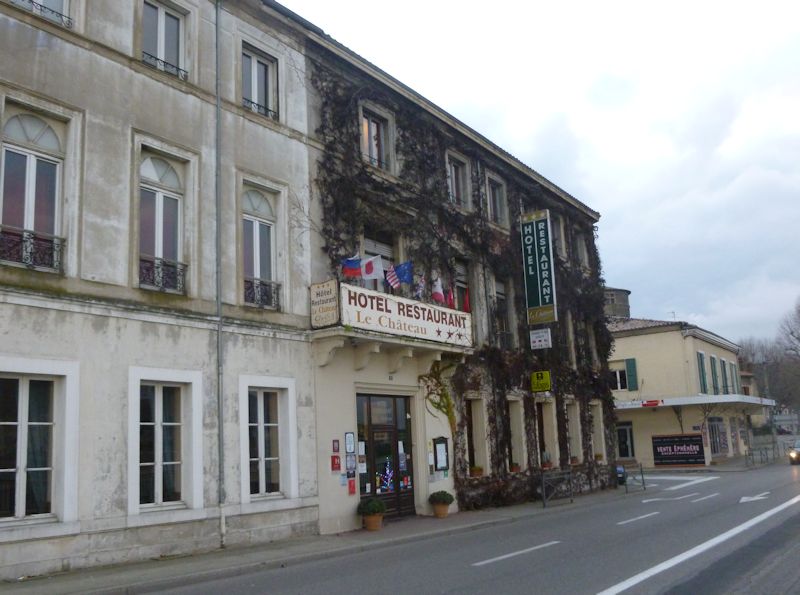
To the Hôtel Le Château, which is open on Christmas Day and welcomes pets. The restaurant is closed, but they've promised to rustle us up a little something if we're not picky.
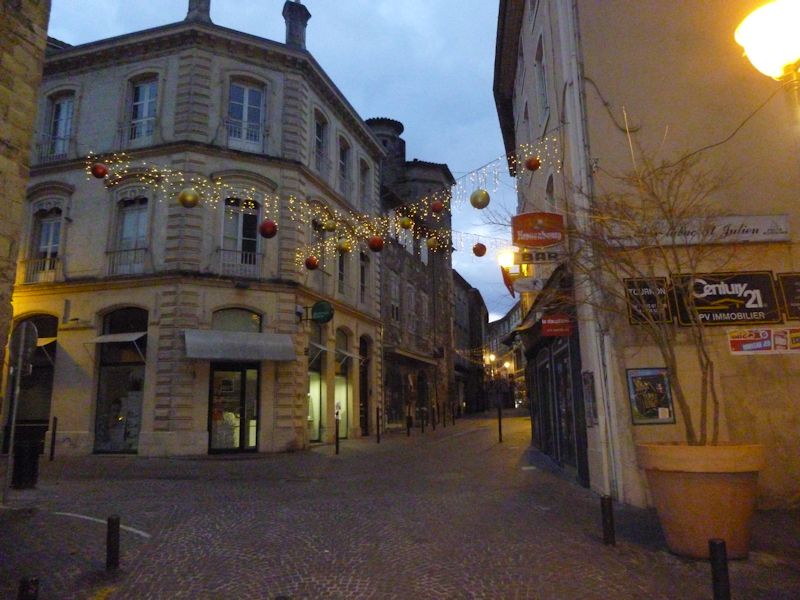
Twilight scenes around Tournon. There was a Roman fortress here (where the castle presently sits) and the expected appurtenances like baths, rich people's villas, etc. The smaller town of Tain l'Hermitage across the river was an important relay stop along the Via Agrippa network of Roman roads in Gaul. The great wines of the region propelled Tournon's growth through medieval times and attracted lots and lots of religious establishments like convents, monasteries, colleges, etc., and other oenophilistic institutions.

It's Christmas Day evening. How festive. In 1469, the French king Louis XI licensed two annual fairs for the town, which made its economics viable. From the late 15th century onward, the Counts of Tournon and family members were players on the national scene -- like Cardinal François de Tournon, Archbishop of Lyons, friend of Erasmus and a key advisor to King François I and Catherine de' Medici until his death in 1562.

-- I was just walking home, and I found this kid. Do something with him.

On our preprandial stroll -- that's Tournon's castle, and our hotel to the left -- we cross the bridge to the neighbor town of Tain l'Hermitage. We're lodged in the Ardèche department, whilst Tain is in the Drôme, and we can walk across from one department to the next just like that on (in fact) a passerelle foot-bridge built by the Seguin brothers in 1849. They also built the first cable suspension bridge in Europe, in 1825, right here, but that was knocked down in 1962 to let the big boats through.

The lady standing by the door of the sculptor's studio is a statue of a hooker awaiting clients. Not commemorating any particular hooker, just generic.
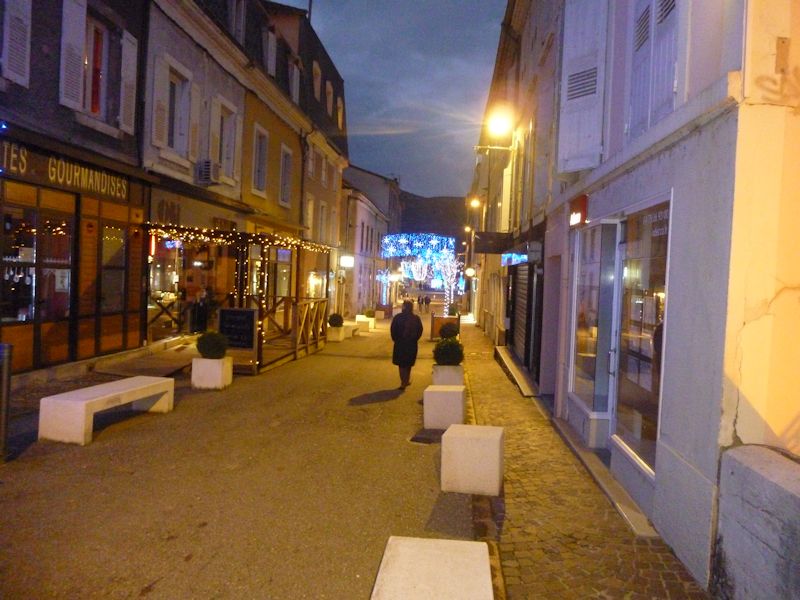
We're over the bridge and heading for the central Place du Taurobole (meaning 'the place where bulls were ritually sacrificed', presumably not recently)

The Place du Taurobole in Tain

Festive, but really cold

It's time for dinner . . . or for whatever our hosts can slap together for us on Christmas Day evening.

Back across the passerelle to Tournon

Reception at the Hôtel Le Château

Tain l'Hermitage on the far side of the Rhône

A new day (Boxing Day, in fact) with a good view of the Seguin brothers' footbridge

The bridge and the church of St Vincent

North Tain and its out-of-season vineyards

Time for breakfast -- not a bad spread, considering that we're the only guests.

Off for some more sightseeing
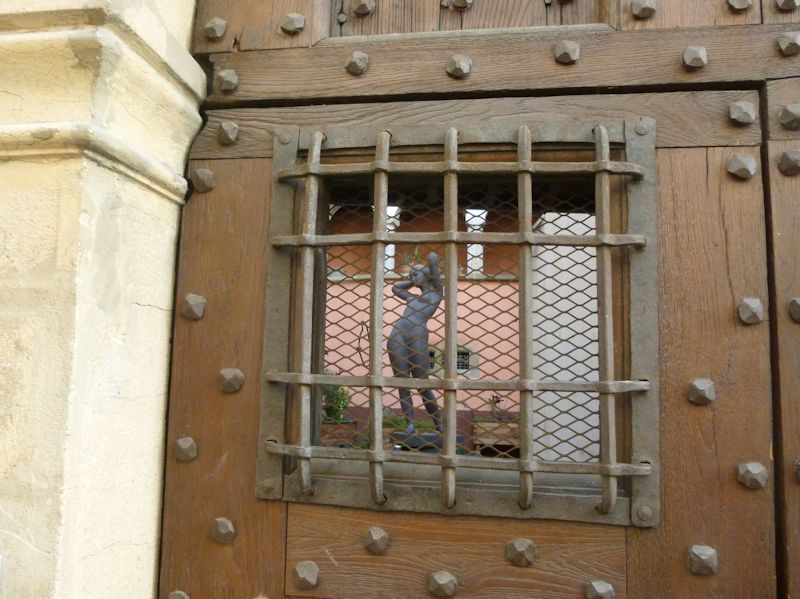
-- Oh, excuse us!


The Hôtel Le Château in sunlight
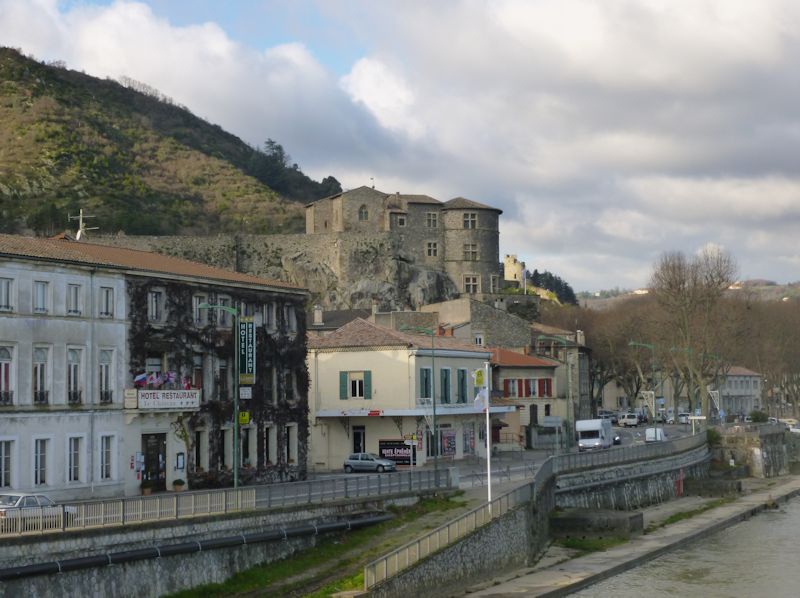
The Castle of Tournon was built by the Lords of Tournon over the 14th to 16th centuries, replacing earlier fortifications from the 9th century. After the death of the last of the Tournon family, it was converted into a prison (of course) and then inherited by the city fathers in 1809, who decided to use it as a prison.

Another view of the Castle on its rocky promontory. There's a museum of the castle within, closed of course, and apparently civic administrative offices.

Another part of the town's early fortifications
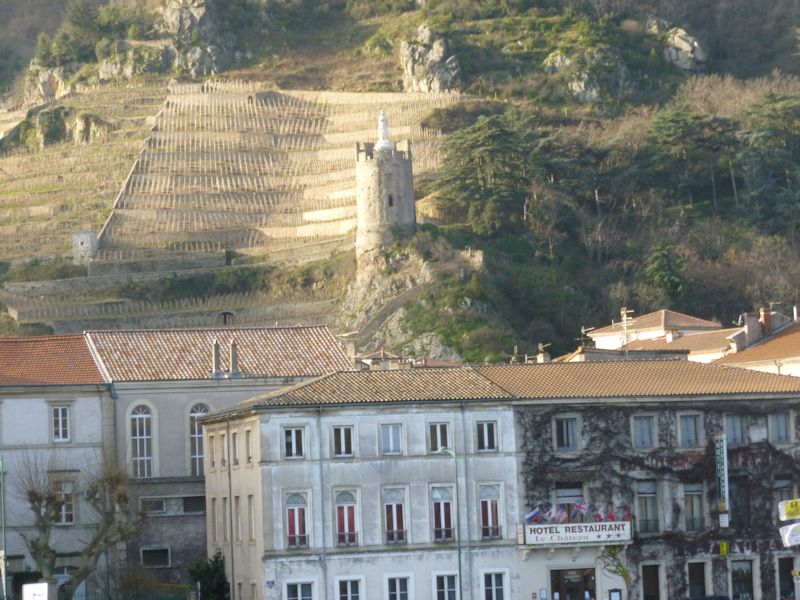
And another part, just up the hill behind the hotel

Riverside Tain
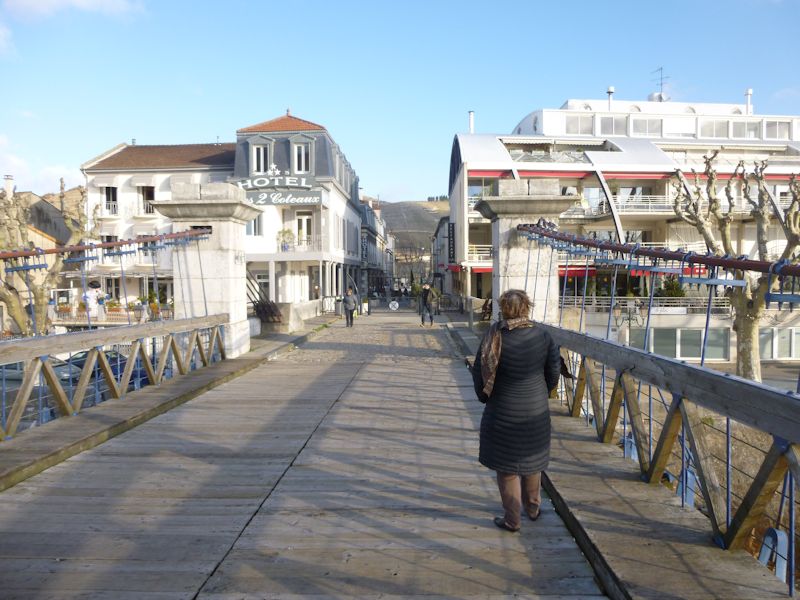
Kristin and the Seguin brothers' pride and joy
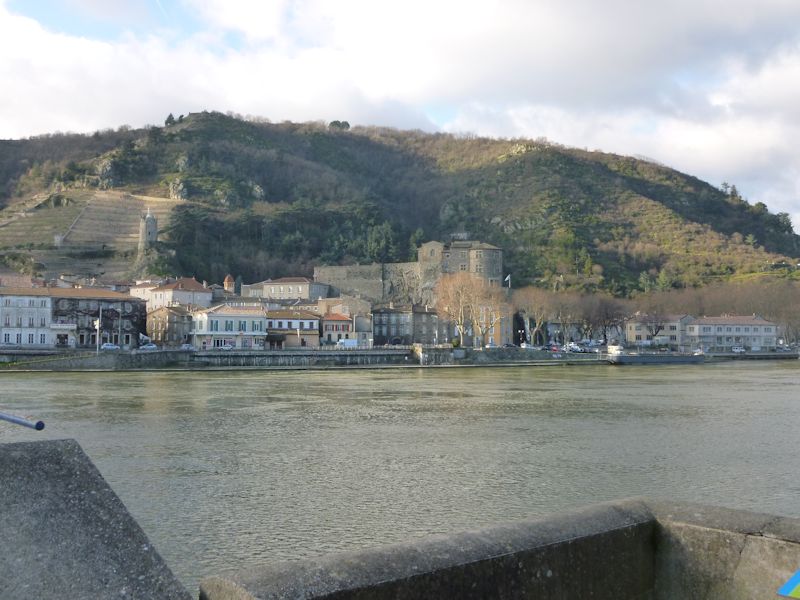
Downtown Tournon-sur-Rhône from Tain l'Hermitage -- compact, perfect for a brief walk round. Tournon's 11,000 inhabitants mostly sprawl out along the riverside to the south (on the left).
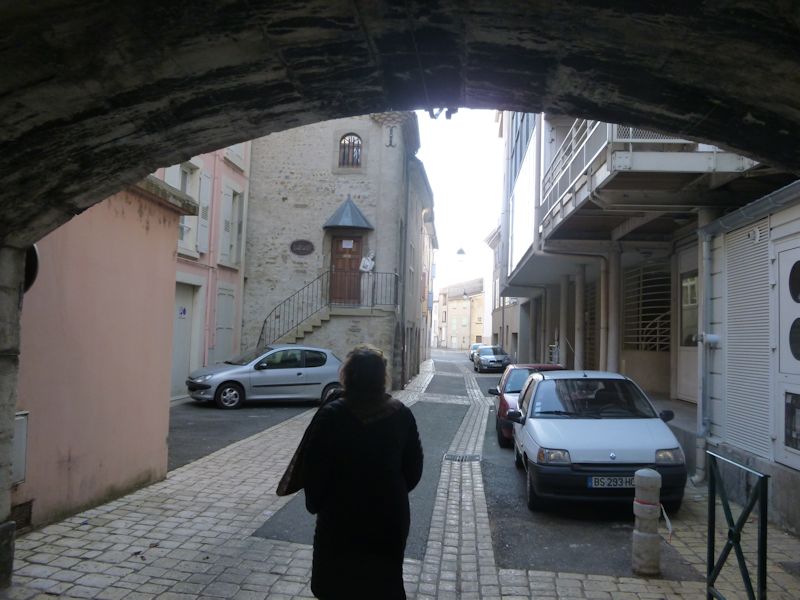
The lady is still out on the front stoop. Must be freezing.

A tromp-l'oeil apartment building

The Eglise de St-Vincent in Tain -- there was a 10th century church on the spot, but its present incarnation dates from 1838. (Though the belltower looks older than that.)


Aw, isn't that cute. In April 1350, the 12-year-old Charles, son of the French king John II, married the 12-year-old Jeanne de Bourbon here, and they lived happily ever after. For a while. A year earlier, this region, called the Dauphiné, had been added to the French crown and given to Charles to rule -- he was thus called 'the Dauphin', as was every heir apparent to the French crown thereafter. King John proved to be too brave and stupid to prosper and, at the battle of Poitiers in 1356, charged Edward the Black Prince when he shouldn't have, and spent the next eight years as a prisoner in England. Young Charles became king in 1364, as Charles V 'the Wise', and spent the next 16 years trying to recover the territories that his father had lost to the English, and he was succeeded by his own 12-year-old son, Charles VI 'the Mad". Joanna died in 1378 at the age of 40, after the birth of her ninth child, only three of whom survived her, and not by much.
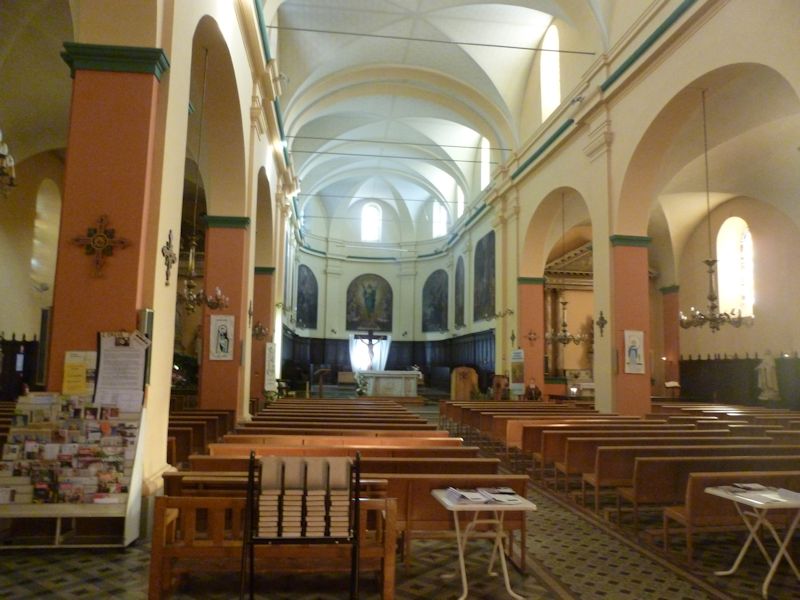
Okay, we've ticked that one off. Let's see what else is to be seen in this town.
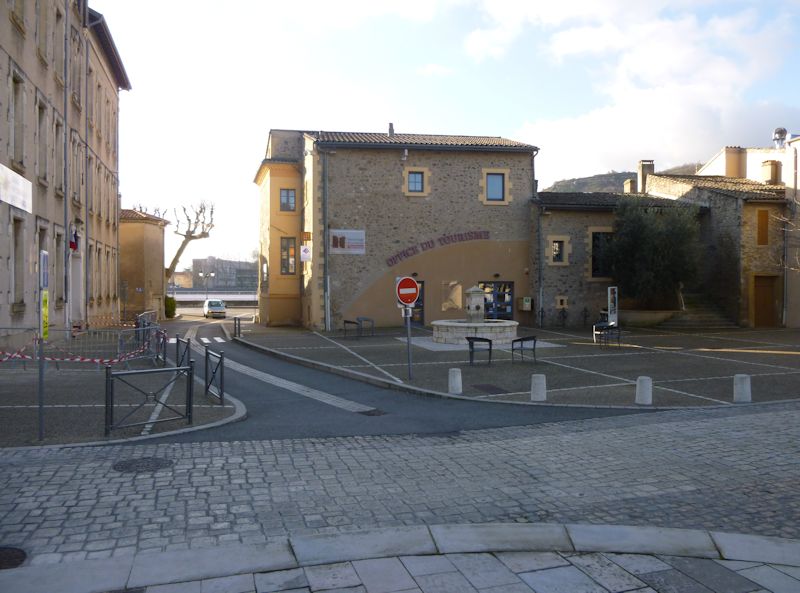
Like the Tourist Office

And the Notre-Dame School, perhaps awaiting the results of another alumni fundraising campaign
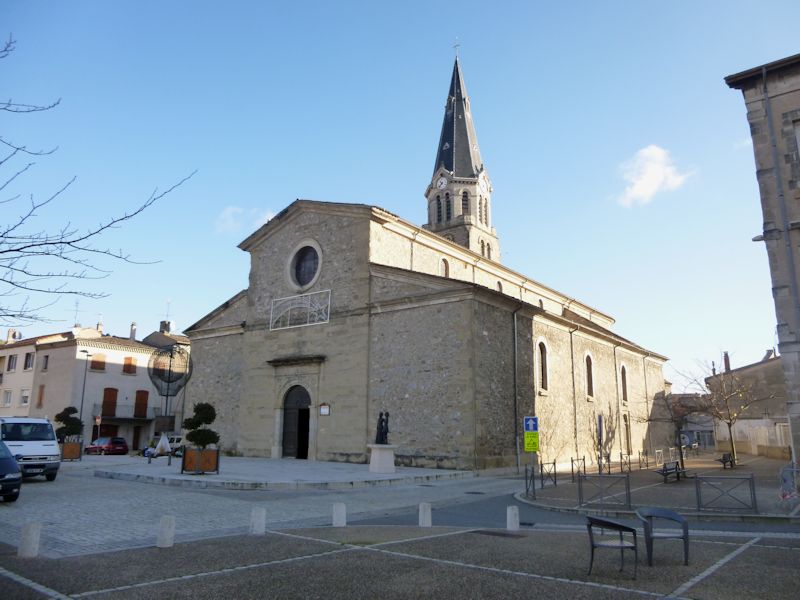
St Vincent's Church

An esplanade along the river

That's disgusting.

The Rhône looking upriver
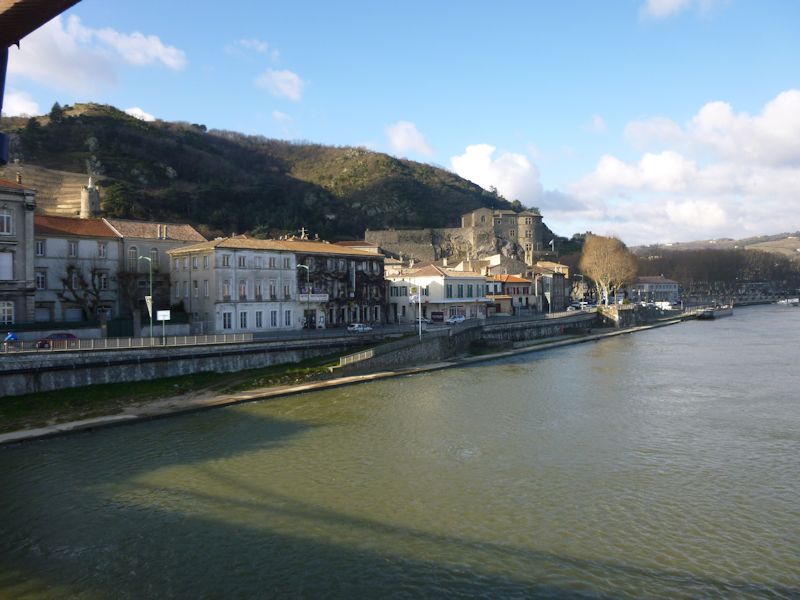
The castle of Tournon

We're on Rue Gabriel Fauré -- not THE Gabriel Fauré the great composer; this gentleman was the French Inspector of Historical Monuments, and of Fine Arts, who was instrumental in the renovation of the Château de Tournon.

The château and museum. (Mark Anderson has an interesting description of the château and family in the 16th century, identifying them as a source for All's Well That Ends Well -- by the Earl of Oxford ("Shakespeare" by another name, 2005, pp. 108-9).)
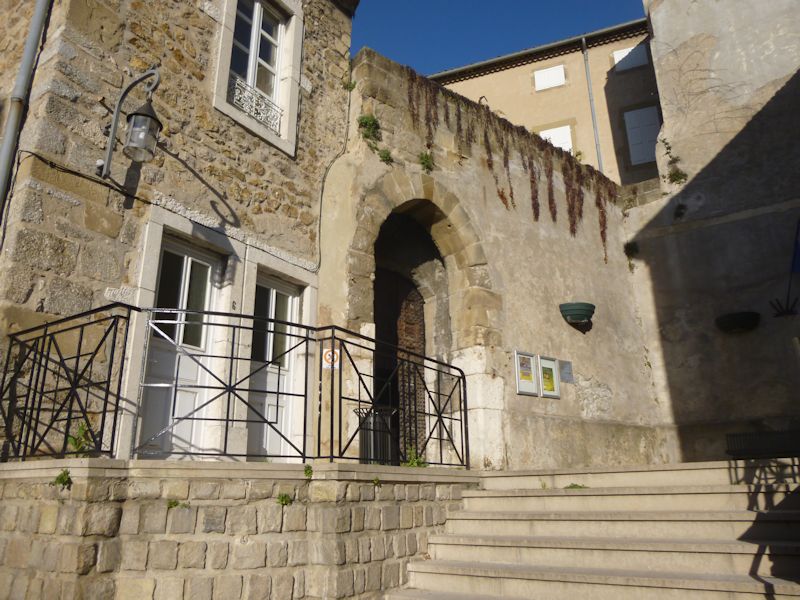
The entrance to the château (locked up tight)
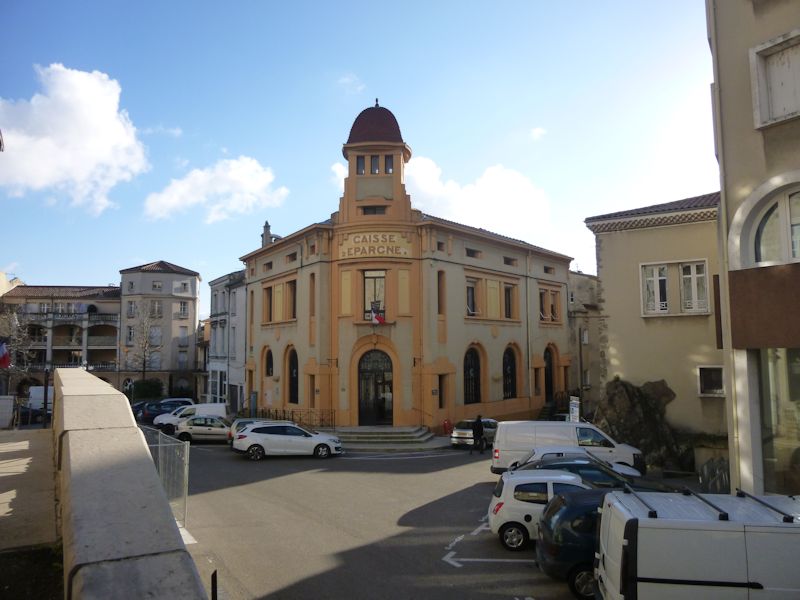
Across the street

The Grande Rue
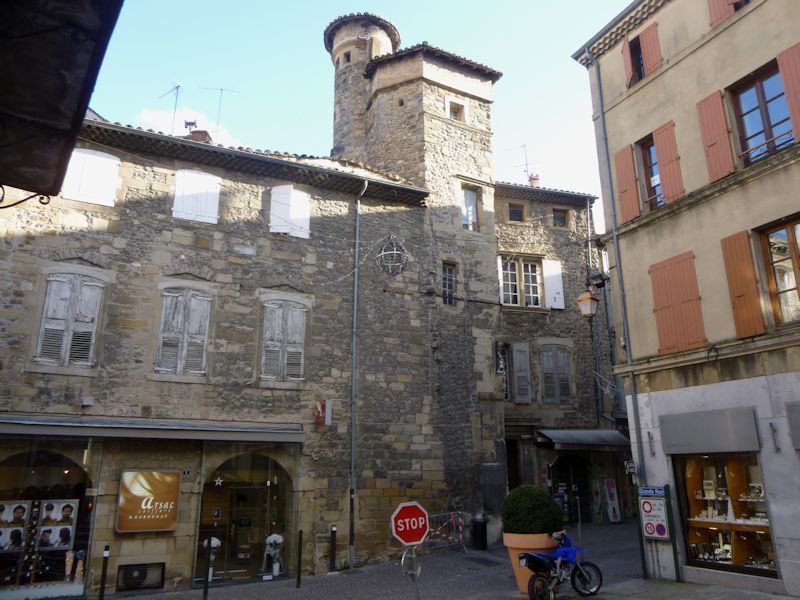
The family home of the Fay-Solignacs, 15th-16th centuries
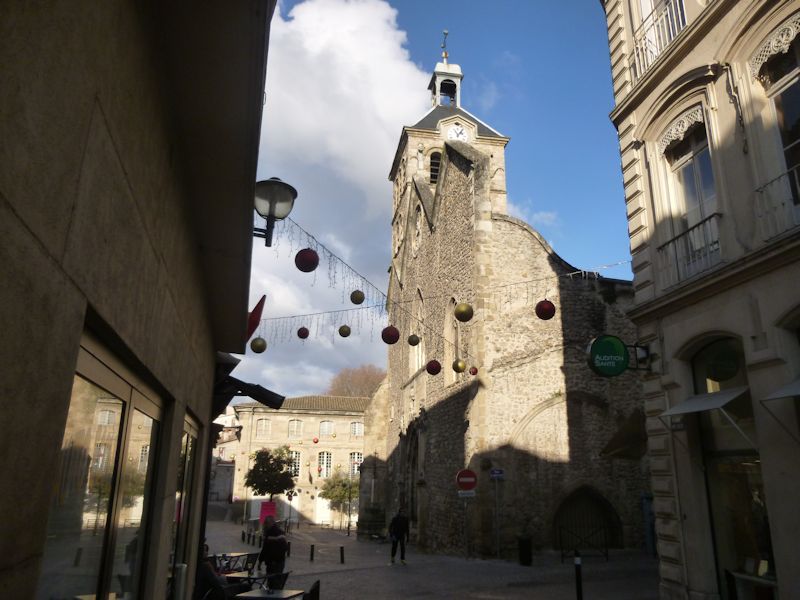
The church of St-Julien, the oldest building in Tournon -- in 1316, the Bishop of Valence (Guillaume de Tournon) graduated the original 11th century Romanesque building to the status of collegiate church and undertook its rebuilding in its present form at that time.

There were related collegiate buildings roundabout, all lost during the French Revolution.


Three naves but no crossways transept, because (according to the info panel out front) there was no room between the Château rock and the river.

Nice little reliefs of the Stations of the Cross round the walls.
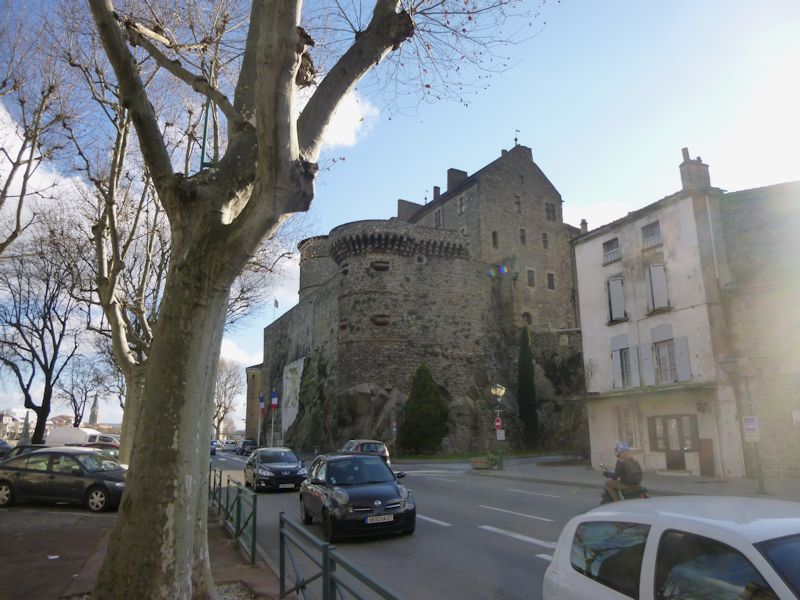
The Château itsownself

Fun fact: François the Dauphin, son of the king François I, died here in 1536, aged 18 (allegedly in the presence of the future poet Ronsard, then a page of 12 years old), but remained unburied because his busy dad was preoccupied with his wars against the Holy Roman Emperor; he was finally buried with his dad in 1547.

And so we leave pleasant Tournon-sur-Rhône and get back on the A7 Autoroute du Sud to the A9 La Languedocienne to Teyran. Not Tehran -- Teyran! A suburb of Montpellier.
      
    
 Feedback
and suggestions are welcome if positive, resented if negative, Feedback
and suggestions are welcome if positive, resented if negative,  .
All rights reserved, all wrongs avenged. Posted 27 January 2015. .
All rights reserved, all wrongs avenged. Posted 27 January 2015.
|
 Dwight Peck's personal website
Dwight Peck's personal website

























































